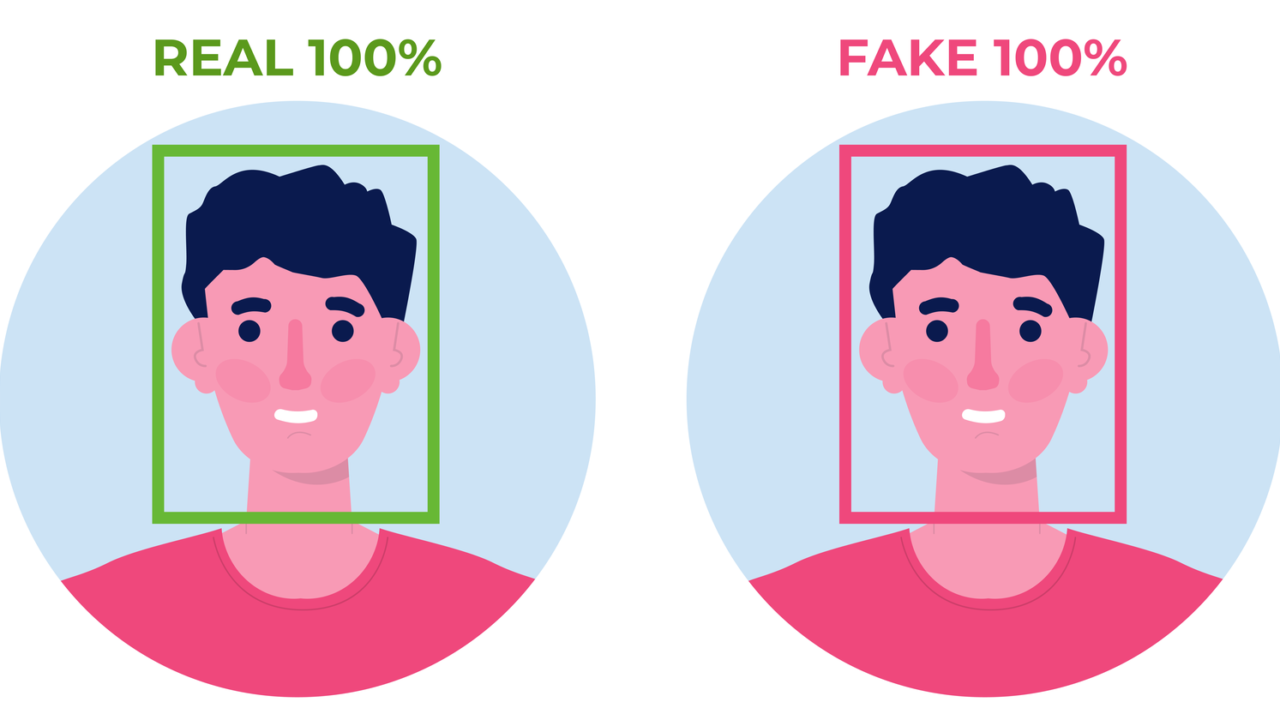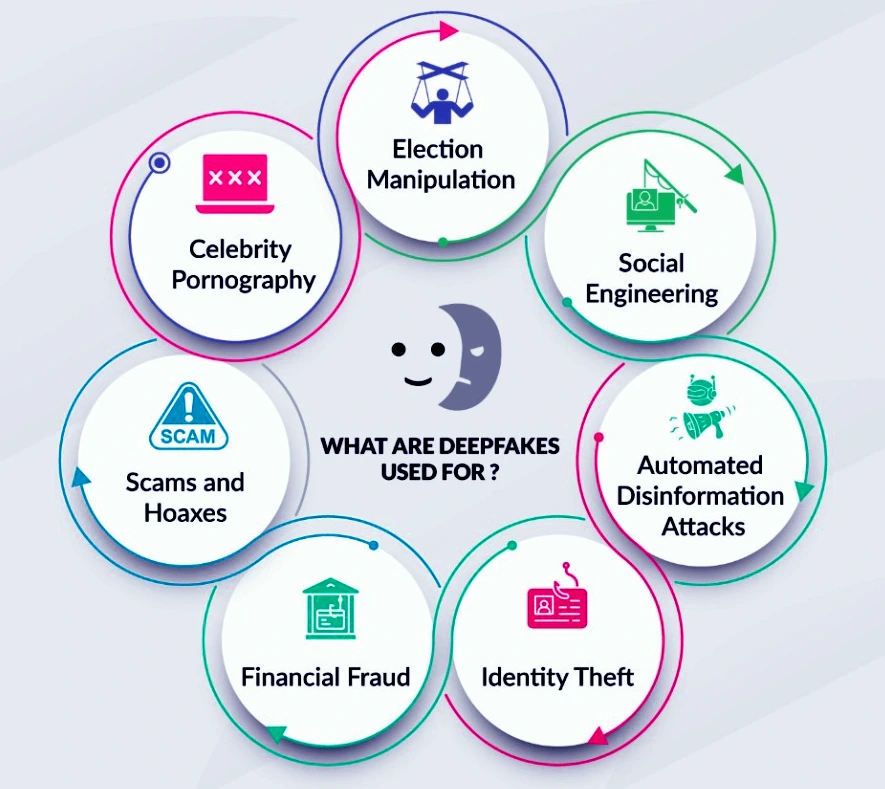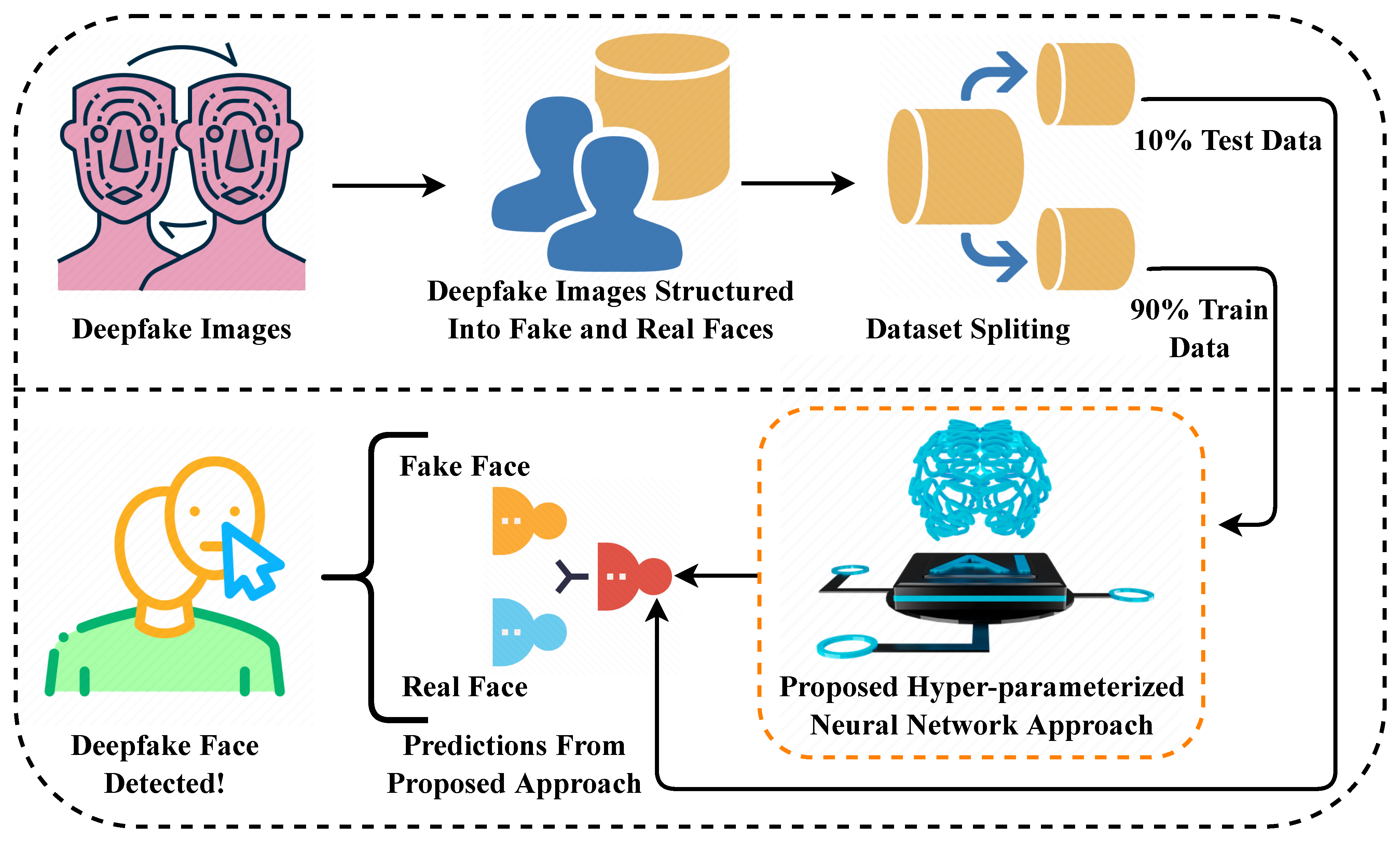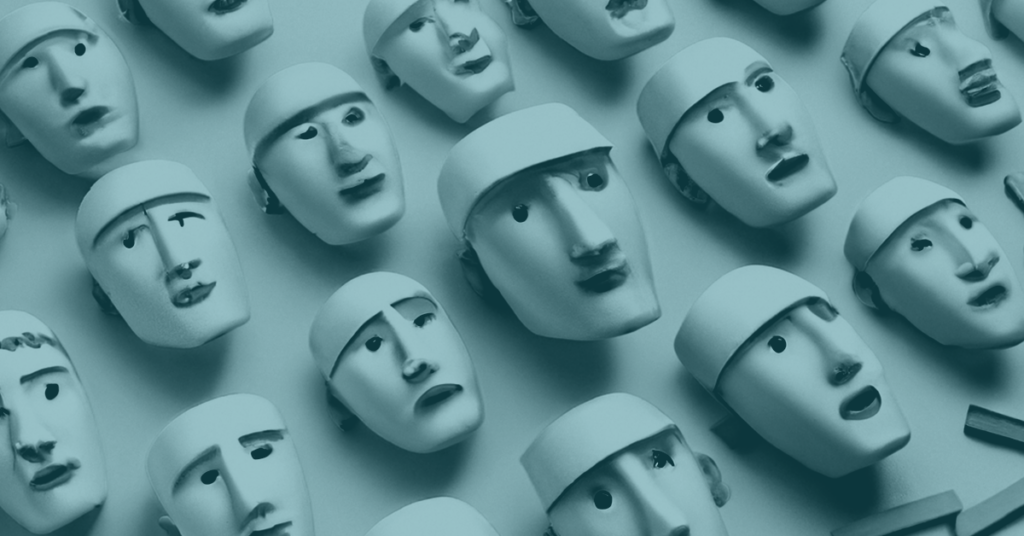Deep fake AI: Advantages and Disadvantages

Deepfakes are a form of synthetic media where advanced artificial intelligence (AI) algorithms are used to create or manipulate audiovisual content, making it appear as though it is real and unaltered. This technology leverages deep learning techniques, particularly deep neural networks, to replace, superimpose, or modify existing images or videos.
The term "deepfake" is a combination of "deep learning," a subset of machine learning, and "fake." These AI-generated media have gained attention for their potential to create highly realistic but entirely fabricated content, such as forged videos or manipulated audio recordings.
Current Challenges:
Advancements in Deepfake Technology:
As deepfake algorithms become more sophisticated, it becomes increasingly difficult to distinguish between manipulated and authentic content. The rapid evolution of these algorithms poses a continuous challenge for detection mechanisms.
Variability in Deepfake Quality:
Deepfakes vary in quality, with some being highly convincing and others exhibiting noticeable artifacts. The wide range of quality makes it challenging to develop a one-size-fits-all detection solution.
Limited Training Data:
Deepfake detectors often rely on a dataset of known deepfakes for training. However, the diversity and volume of available deepfake data may not be sufficient to cover the ever-expanding landscape of synthetic media.
Adversarial Attacks:
Adversarial techniques employed by creators of deepfakes aim to deceive detectors. These attacks involve tweaking the deepfake content to specifically circumvent detection algorithms, undermining their effectiveness.
Real-Time Detection Challenges:
Detecting deepfakes in real-time poses significant challenges, especially in applications like live streaming or video conferencing where immediate response is crucial.
Promising Approaches and Future Solutions:

Deep Learning and AI-Based Solutions:
Continued advancements in deep learning and artificial intelligence are expected to contribute to more robust detection algorithms. AI-driven solutions can adapt to evolving deepfake techniques and enhance accuracy.
Blockchain Technology for Content Authentication:
Integrating blockchain technology can provide a decentralized and tamper-proof ledger for verifying the authenticity of media content, offering an additional layer of trust.
Improving Data Diversity:
Efforts to enhance deepfake detection must include the creation of diverse datasets that encompass a wide range of deepfake variations. This would better prepare detection models for the evolving nature of synthetic media.
Celebrities and Deepfakes: Navigating the Challenges of Digital Identity
The Intersection of Celebrities and Deepfakes:
Deepfake Threats to Reputation:
Celebrities are often the targets of deepfake creators seeking to exploit their image for various purposes, including spreading misinformation, damaging reputations, or creating sensationalized content.
Privacy Invasion:
Deepfakes can infringe upon celebrities' privacy by superimposing their likeness onto explicit or misleading content. This invasion poses not only reputational risks but also emotional and psychological tolls on individuals.
Impact on Brand Endorsements:
The authenticity of celebrity endorsements can be compromised by convincing deepfakes, leading to potential consequences for brands associated with these celebrities.
Challenges in Detecting and Combating Deepfakes:
Rapid Evolution of Deepfake Technology:
As deepfake algorithms become more sophisticated, staying ahead of the curve in detection methods becomes challenging, leaving celebrities vulnerable to increasingly realistic forgeries.
Large-Scale Distribution:
Deepfake content can quickly spread across social media platforms, making it challenging to control the dissemination of fabricated material and mitigate its impact.
Adversarial Techniques:
Deepfake creators employ adversarial tactics to outsmart detection algorithms, further complicating the task of identifying and removing malicious content.
Protective Measures for Celebrities:

Digital Literacy and Education:
Celebrities and their teams can benefit from education and awareness programs focused on recognizing and addressing deepfake threats, enabling them to navigate the digital landscape more effectively.
Technological Solutions:
Investing in advanced technological solutions, including state-of-the-art deepfake detection tools, can provide an added layer of defense against synthetic media manipulation.
Legal Strategies:
Celebrities can explore legal avenues to protect their digital identity, including pursuing legal action against those who create or distribute malicious deepfakes.
Collaboration with Tech Platforms:
Establishing partnerships with social media and tech platforms can facilitate quicker identification and removal of deepfake content, helping to mitigate the potential impact on celebrities' reputations.
Key Aspects of Deepfakes:
Face Swapping: One common application of deepfakes involves face swapping, where an individual's face is superimposed onto another person's body, creating a convincing but entirely fictional video.
Voice Synthesis: Deepfake technology is not limited to visual elements. It can also be applied to generate synthetic voices that mimic the cadence, tone, and speech patterns of real individuals.
AI-based Manipulation: Deepfake algorithms learn patterns and features from vast datasets of images or videos to create realistic simulations. As a result, the generated content can be challenging to distinguish from authentic media.
Concerns and Ethical Implications:
Misinformation and Disinformation: Deepfakes raise concerns about the spread of misinformation, as convincingly manipulated content could be used to deceive and manipulate public opinion.
Privacy Issues: The technology poses threats to personal privacy, as it can be used to create fabricated content featuring individuals without their consent.
Impacts on Trust: The existence of deepfakes challenges the trustworthiness of visual and auditory information, making it more difficult for individuals to discern genuine content from manipulated material.
Potential for Abuse: Deepfake technology can be misused for malicious purposes, including the creation of fake news, cyberbullying, or even financial scams.
Legal and Regulatory Challenges: As deepfake technology advances, there are ongoing discussions and debates regarding legal and regulatory frameworks to address the ethical concerns and potential harms associated with synthetic media.
Advantages:

Entertainment and Creativity:
Deepfake technology allows for innovative and creative applications in the entertainment industry, such as realistic face swaps in movies or creating lifelike performances of deceased actors.
Digital Content Creation:
Content creators can leverage deepfake technology to generate engaging and visually compelling content, adding a new dimension to digital storytelling and artistic expression.
Enhanced Special Effects:
Deepfakes enable the creation of sophisticated and realistic special effects in films, video games, and virtual reality, enhancing the overall quality of visual experiences.
Dubbing and Localization:
Deepfake technology can be used for dubbing and language localization in the film and television industry, making it easier to adapt content for different audiences.
Training and Simulation:
Deepfakes can be applied in training scenarios, such as simulations for medical procedures, emergency response, or military training, providing realistic and immersive experiences.
Disadvantages:
Misinformation and Fake News:
Deepfakes pose a significant threat to the spread of misinformation and fake news, as convincing fabricated videos can be created to deceive and manipulate public opinion.
Privacy Invasion:
The technology raises concerns about privacy infringement, as it can be used to create fabricated content featuring individuals without their consent, potentially damaging personal and professional reputations.
Security Risks:
Deepfakes can be exploited for malicious purposes, including identity theft, financial fraud, or cyberattacks, as the technology allows for the creation of realistic impersonations.
Undermining Trust:
The proliferation of deepfake technology undermines trust in digital media, making it challenging for individuals to discern between authentic and manipulated content.
Potential for Harassment and Exploitation:
Deepfakes can be misused for harassment, cyberbullying, or the creation of explicit content without consent, leading to significant emotional and psychological harm to victims.
Legal and Ethical Issues:
The use of deepfake technology raises complex legal and ethical questions, including issues related to intellectual property, consent, and the responsibility of platforms hosting such content.

The advent of deepfake technology brings with it a transformative wave that challenges our perceptions of reality and underscores the critical need for proactive responses. As explored in this discussion, the implications of deepfakes extend far beyond the realm of entertainment, reaching into the core of privacy, trust, and security.
The challenges posed by deepfakes are complex, touching on issues such as misinformation, privacy invasion, and potential reputational harm. The rapid evolution of deepfake algorithms and the ingenuity of those seeking to exploit this technology create an ever-shifting landscape that demands constant vigilance.







Post a Comment
0 Comments